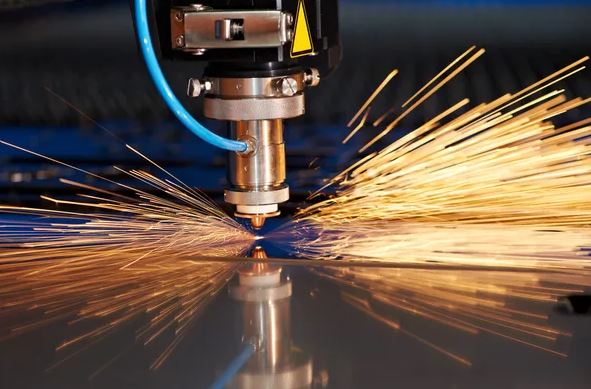Regarding tagging and labeling products, Laser Engraver for Metal is the most often used laser marking technology. Permanent markings can be made on various substrates using laser marking equipment. Accuracy is not an issue with laser engraving. As a result, it has become the standard method for keeping components and finished goods in numerous sectors, including the automobile and aerospace industries.
Everything you need to know to successfully use this technology in your project is covered in this article.
What exactly is laser engraving?
A laser marking machine, or laser engraving machine, is used to melt targeted areas on nearly any substrate. As a result, it leaves behind contrasting markings that are permanent and more visible than the surrounding areas of the part or product.
Logos, barcodes, serial numbers, and QR codes can all be applied using this method. Together with other laser marking technologies, including laser etching, annealing, and ablation, the process forms a suite of highly dependable techniques used in product ornamentation, identification, and tracking.
Explain the process of laser engraving.
To engrave something, a beam of laser light must be focused on the object safely and given enough strength to etch the desired design into the material. Because of this, the material evaporates and is permanently imprinted on the components. Power must be adjusted appropriately; too little will be ineffectual, and too much will burn the material.
The method of Laser Engraver for Wood and Metal is simple to execute. Here are the measures required for laser engraving a component:
The Creative Process: Ideation
We mean by “ideation” is the process of developing concepts for the markings and the materials that will be most suitable for them. It calls for a lot of imagination. For this reason, it is the most crucial stage of laser engraving because it dictates the final result.
Create a Marking Image for Usage.
Create the mark you wish to make on a digital image. Adobe Illustrators, Inkscape, Lightburn, DraftSight, and Onshape are all excellent options for making visuals. You must also check that the machine can read your designed file.
Choose the Material
You should pick a material that works with the laser engraver and looks good with your artwork. Stone, glass, plastic, and metal are some common materials that Best Laser Cutter Engraving Machines may deal with. However, a limited set of substances works with each design. UV laser markers, which don’t generate much heat (they’re cold lasers), are well-suited for plastics, while CO2 laser markers work well with organic materials.
Set up the Machine
The various engraving processes are distinguished by their respective machine settings and varieties. Determine the effects of varying the laser power, cut depth, cutting speed, number of passes, and line thickness on similar test materials. Don’t forget to save the optimal configurations that match your preferences.
The Laser Is Used to Engrave the Piece
Put the stuff in the machine and label it. As soon as you’ve finished the marking process, you can take the material out of the device and clean it.
